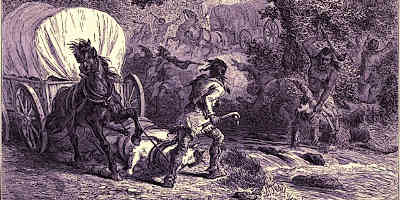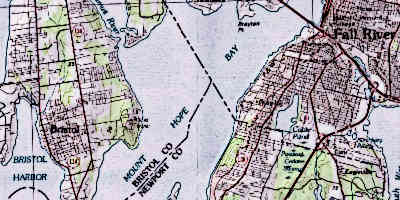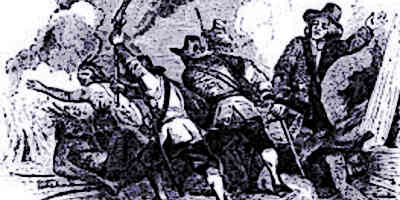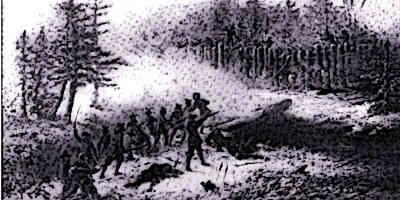Battle of Bloody Brook 1675
The Battle of Bloody Brook was fought between Native Americans and English colonists. Read more about the Battle of Bloody Brook 1675 >>
Battle of Mount Hope
The Battle of Mount Hope was a battle fought during King Philip's War in the 17th century. Read more about the Battle of Mount Hope >>
Battle of Turner’s Falls
The Battle of Turner's Falls was fought as a part of King Philip's War. Read more about the Battle of Turner’s Falls >>
The Great Swamp Fight
The Great Swamp Fight was a battle that took place during King Philip's War in the 17th century Read more about the The Great Swamp Fight >>
When did King Philip’s War take place?
King Philip’s War started in 1675. In the years leading up to the war, tensions grew between the European settlers and Native American tribes. In 1675, the war started and continued for the next three years. It came to an end in 1678.
Background of the War
The Native Americans of the Wampanoag tribe were one of the first Native tribes to have contact with the European settlers. When Pilgrims arrived in North America, Wampanoag helped them by providing them food and other provisions. Their help was critical in helping the Pilgrims survive.
Later, the Pilgrims became securely established in the Plymouth colony. With time, the colony began to expand and take over more and more land. This brought the colonists in conflict with the Native American tribes who resented their expansion.
Why was it called King Philip’s War?
At the beginning, the relations between Wampanoag and English colonists were so good that the Wampanoag Chief’s son adopted the name of Philip. His real name was Metacomet. The colonists called him ‘King Philip’ as he was the chief of a large alliance of Native Americans during the war.
Events Leading to the War
In 1662, Metacomet became the chief of the Wampanoag. Before him, his father had maintained friendly relations with the English colonists. But Metacomet didn’t want to continue this policy. To make matters worse, the colonists demanded his tribe to surrender their guns.
Later in 1675, the colonists executed three Wampanoag men were hanged for murder. This flared up the tensions and Metacomet decided to launch an attack against the colonists. This attack marked the beginning of the war.
Major Events of the War
One of the major events of the war was the siege and destruction of the city of Swansea. Metacomet and his forces laid siege to the colonial settlements and killed a number of settlers while burning it down. The Native American forces then laid siege to Brookfield but this siege was largely successful.
The same year, the Battle of Bloody Brook took place which was a notable victory for Native Americans. But then the colonists militia became organized and the tide turned. In December, 1675, the colonist militia reached the highly fortified stronghold of Narragansetts who were an ally of the Wampanoag. The militia was able to destroy the stronghold, burn stored crops and kill hundreds of Native Americans.
Result and Aftermath of the War
By 1676, the colonist militias had the upper hand. They pushed forward, destroying Native American villages and defeating native forces. Metacomet tried to rally the support of the Mohawk tribe but the Mohawks sided with the colonists. Metacomet was captured in August, 1676 and later beheaded. Although minor skirmishes continued for another two years, the colonists decisively won the war.



